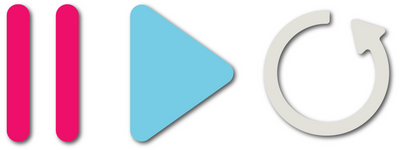Understanding Serum's Miscellaneous Filters
While most softsynths include classic options like lowpass, highpass, bandpass, notch (and sometimes comb and formant) with different roll-off slopes, Serum’s filter includes ninety modes. While many of these are variations on those mentioned above, as well as 21 combination modes that are reminiscent of the original Oberheim Xpander, the “miscellaneous” group is of special note.
Here, you’ll find a few filter types that aren’t immediately obvious in their uses. Granted, the EQs are relatively self-explanatory, as are the ring mod options. But it’s worth exploring the more esoteric modes below:
SampHold
- Works a lot like a bit-crusher, with low “cutoff” values dissolving the sound into a mass of digital grunge. Try applying this filter type to one of the white noise options and the result will be quite similar to vintage video game explosions. Bottom line: It’s great for fans of the chiptune genre.
Reverb
- At first, listen, this mode doesn’t seem to add a traditional reverb tail to the sound, unless you use extremely low cutoff values, resulting in a tight room reverb. At its core, the Reverb filter is actually a feedback delay network that can be used for hard-to-reproduce physical modeling effects when the cutoff is static. When the cutoff is modulated, all bets are off, as it sounds a bit like a flanger through a wormhole. For squeaky transients, modulate the cutoff quickly with an envelope. For full-on mayhem, use an LFO.
- PRO TIP: All of Serum’s filter types are also available in its end-of-chain Filter effect, so if you want to hear the Reverb mode (or any other) in a different context, audition the options in the effect device.
Formant I, II and III
- Each of these formant filters are optimized for different vowel transitions when adjusting the cutoff parameter. I’ve used these modes extensively for analog choir effects.
German LP and French LP
- These lowpass filter modes are amazingly warm, with an analog-like depth, though being located in the “Misc” category means they’re often overlooked. For the technically inclined, German is a “zero delay feedback” LPF, while French is a pair of LPFs cascading in series.
- PRO TIP: Watch those parameters. Many of the filter’s parameters actually change, depending on the filter mode. The top row of parameters is always cutoff, resonance, and pan (which offsets the cutoff in stereo, with increasing widths). The bottom row includes drive and mix, which controls the wet/dry balance of the filtered signal. The center parameter on the bottom row is the wild card that you should always note when switching between types. For example, in EQ modes, it’s a boost/cut parameter. Formant modes allow for further customization of vowel characteristics. In the multi modes, it governs filter morphing between the various slopes.

Leave a comment